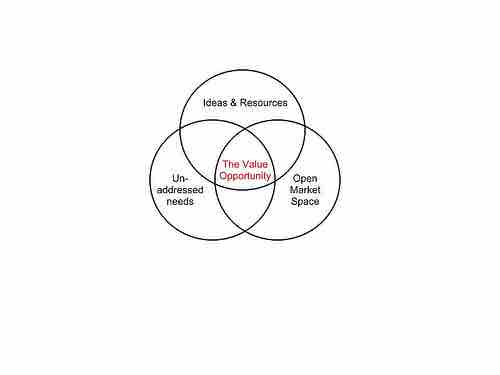The value of a product is the mental estimation a consumer makes of it. Formally it may be conceptualized as the relationship between the consumer's perceived benefits in relation to the perceived costs of receiving these benefits. Value changes based on time, place and people in relation to changing environmental factors. It is a creative energy exchange between people and organizations in the marketplace, and it is often expressed in the equation:
Value can also be expressed as
Value is thus subjective (i.e., a function of consumers' estimation) and relational (i.e., both benefits and cost must be positive values). For a firm to deliver value to its customers, they must consider what is known as the "total market offering. " This includes the reputation of the organization, staff representation, product benefits, and technological characteristics as compared to competitors' market offerings and prices. Value can thus be defined as the relationship of a firm's market offerings to those of its competitors .

Value Proposition
This image depicts the point where value opportunity exists.
Value in marketing can be defined by both qualitative and quantitative measures. On the qualitative side, value is the perceived gain composed of individual's emotional, mental and physical condition plus various social, economic, cultural and environmental factors. On the quantitative side, value is the actual gain measured in terms of financial numbers, percentages, and dollars. Normally, in the exchange process, the seller is more active than the buyer as he or she identifies the needs of the potential buyers and persuades them to buy the product.
However, when a buyer plays an active role, he or she will be treated as a marketer. For an individual to deliver value, one has to grow his or her knowledge and skill sets to showcase benefits delivered in a transaction (e.g., getting paid for a job). For an organization to deliver value, it has to improve its value to cost ratio. When an organization delivers high value at high price, the perceived value may be low. When it delivers high value at low price, the perceived value may be high. The key to deliver high perceived value is attaching value to each of the individuals or organizations—making them believe that what you are offering is beyond expectation—helping them to solve a problem, offering a solution, giving results, and making them happy.
The value in the marketplace varies from place to place as well as from market to market, and there are parallels between cultural expectations and consumer expectations in relation to perceived value. For example, a consumer in Japan might value a pizza topped with tuna more so than one topped with pepperoni.